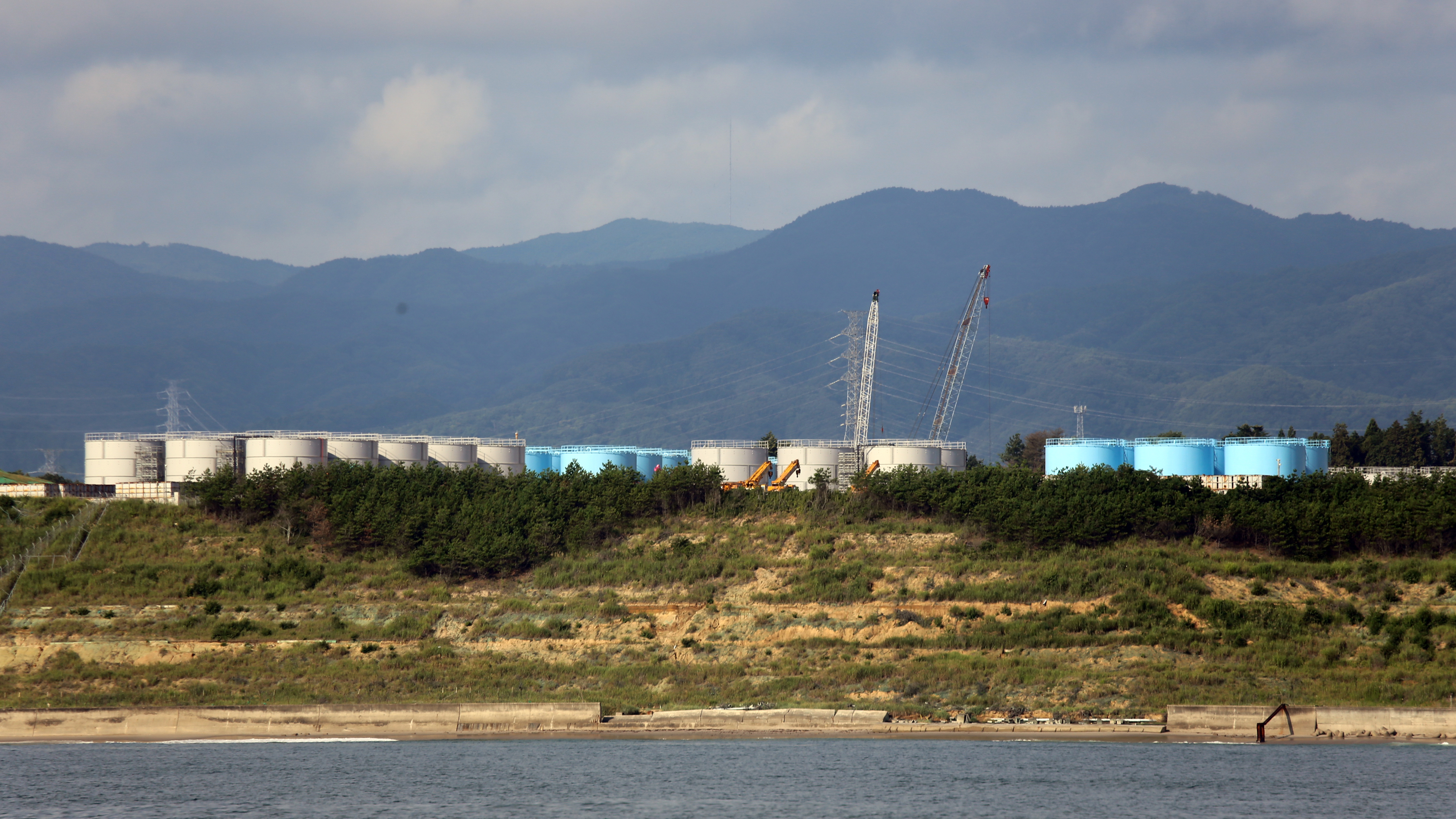Nearly 10 years after the Tohoku-oki earthquake and tsunami devastated Japan’s Fukushima Dai-ichi Nuclear Power Plant and triggered an unprecedented release of radioactivity into the ocean, radiation levels have fallen to safe levels in all but the waters closest to the shuttered power plant. Today, fish and other seafood caught in waters beyond all but a limited region have been found to be well within Japan’s strict limits for radioactive contamination, but a new hazard exists and is growing every day in the number of storage tanks on land surrounding the power plant that hold contaminated wastewater. An article published August 7 in the journal Science takes a look at some of the many radioactive elements contained in the tanks and suggests that more needs to be done to understand the potential risks of releasing wastewater from the tanks into the ocean.
“We’ve watched over the past nine-plus years as the levels of radioactive cesium have declined in seawater and in marine life in the Pacific,” said Ken Buesseler, a marine chemist at the Woods Hole Oceanographic Institution and author of the new paper. “But there are quite a few radioactive contaminants still in those tanks that we need to think about, some of which that were not seen in large amounts in 2011, but most importantly, they don’t all act the same in the ocean.”
Since 2011, Buesseler has been studying the spread of radiation from Fukushima into and across the Pacific. In June of that year, he mobilized a team of scientists to conduct the first international research cruise to study the early pathways that cesium-134 and -137, two radioactive isotopes of cesium produced in reactors, were taking as they entered the powerful Kuroshio Current off the coast of Japan. He has also built a network of citizen scientists in the U.S. and Canada who have helped monitor the arrival and movement of radioactive material on the Pacific coast of North America.
Now, he is more concerned about the more than 1,000 tanks on the grounds of the power plant filling with ground water and cooling water that have become contaminated through contact with the reactors and their containment buildings. Sophisticated cleaning processes have been able to remove many radioactive isotopes and efforts to divert groundwater flows around the reactors have greatly reduced the amount of contaminated water being collected to less than 200 metric tons per day, but some estimates see the tanks being filled in the near future, leading some Japanese officials to suggest treated water should be released into the ocean to free up space for more wastewater.
One of the radioactive isotopes that remains at the highest levels in the treated water and would be released is tritium, an isotope of hydrogen is almost impossible to remove, as it becomes part of the water molecule itself. However, tritium has a relatively short half-life, which measures the rate of decay of an isotope; is not absorbed as easily by marine life or seafloor sediments, and produces beta particles, which is not as damaging to living tissue as other forms of radiation. Isotopes that remain in the treated wastewater include carbon-14, cobalt-60, and strontium-90. These and the other isotopes that remain, which were only revealed in 2018, all take much longer to decay and have much greater affinities for seafloor sediments and marine organisms like fish, which means they could be potentially hazardous to humans and the environment for much longer and in more complex ways than tritium.
“The current focus on tritium in the wastewater holding tanks ignores the presence other radioactive isotopes in the wastewater,” said Buesseler. “It’s a hard problem, but it’s solvable. The first step is to clean up those additional radioactive contaminants that remain in the tanks, and then make plans based on what remains. Any option that involves ocean releases would need independent groups keeping track of all of the potential contaminants in seawater, the seafloor, and marine life. The health of the ocean—and the livelihoods of countless people—rely on this being done right.”
The Woods Hole Oceanographic Institution is a private, non-profit organization on Cape Cod, Mass., dedicated to marine research, engineering, and higher education. Established in 1930 on a recommendation from the National Academy of Sciences, its primary mission is to understand the ocean and its interaction with the Earth as a whole, and to communicate a basic understanding of the ocean’s role in the changing global environment. For more information, please visit www.whoi.edu.
###
Key Takeaways
- Concentrations of radioactive material released into the Pacific from the Fukushima Dai-ichi nuclear power plant and found in the Pacific Ocean or in fish have largely declined to safe levels.
- A larger problem exists in the form of more than 1,000 tanks full of contaminated, but treated, wastewater stored on the grounds of the power plant and that have been suggested need to be emptied into the ocean to free up space for more untreated water.
- Current focus on tritium levels overlooks the much larger problem presented by other radioactive isotopes in the treated water, not all of which have been made public.
- Many of these other isotopes emit more dangerous forms of radiation, and act in more complex ways in the environment, accumulating in seafloor sediments and in marine life, more readily than tritium.
Original post https://alertarticles.info
